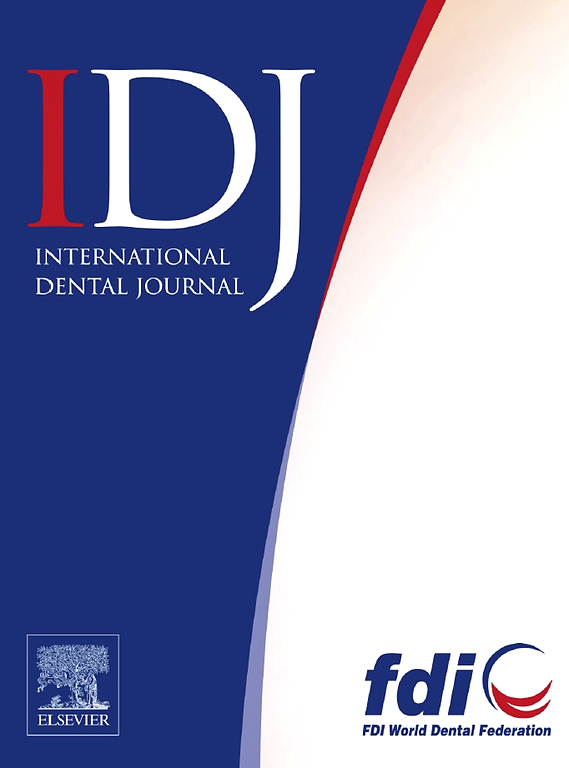TTK通过mTORC1/NF-κB双激活定义高危口腔鳞状细胞癌亚型
IF 3.7
3区 医学
Q1 DENTISTRY, ORAL SURGERY & MEDICINE
引用次数: 0
摘要
目的:口腔鳞状细胞癌由于其明显的肿瘤异质性,仍然难以治疗,因此需要识别具有不同治疗脆弱性的分子亚型。本研究旨在全面表征OSCC分子亚型并确定潜在的治疗靶点。材料和方法:我们对709例OSCC病例进行了单细胞和大量RNA测序的综合分析。用质谱法和免疫沉淀法检测蛋白质相互作用。通过体外细胞增殖和侵袭实验、敲除细胞系的RNA测序和体内异种移植模型来评估关键调节因子的功能作用。统计分析包括差异基因表达分析、途径富集和药物敏感性的IC50测定。结果:我们发现了一种独特的分子OSCC亚型,其特征是mTORC1和NF-κB途径同时激活,而TTK是这种共激活的中心调节因子。该亚型患者表现出明显的基因组不稳定性,反映在肿瘤突变负担增加,TP53突变频率较高,多个基因组区域的拷贝数扩增。从机制上看,质谱和共免疫沉淀试验表明TTK直接与TAK1-TAB蛋白复合物相互作用,从而激活NF-κB通路。对TTK敲低细胞系的RNA测序显示,TTK抑制后mTOR和NF-κB信号均显著下调。功能实验证实,TTK抑制显著降低了OSCC细胞的增殖和侵袭,显著增强了体外和体内顺铂的敏感性。结论:我们的研究结果表明TTK是确定高风险OSCC分子亚型的关键介质,其特征是mTORC1和NF-κB途径同时激活和严重的基因组不稳定性。TTK和TAK1-TAB复合物之间的直接相互作用的发现为NF-κB活化提供了新的机制,而其抑制作用可显著提高顺铂敏感性。这些结果为进一步临床评估TTK抑制剂作为改善侵袭性OSCC预后的有希望的治疗策略提供了依据。本文章由计算机程序翻译,如有差异,请以英文原文为准。

TTK Defines a High-Risk Oral Squamous Cell Carcinoma Subtype Through Dual mTORC1/NF-κB Activation
Objective
Oral squamous cell carcinoma remains difficult to treat because of its marked tumor heterogeneity, highlighting the need to identify molecular subtypes with distinct therapeutic vulnerabilities. This study aimed to comprehensively characterize OSCC molecular subtypes and identify potential therapeutic targets.
Materials and methods
We conducted an integrated analysis combining single-cell and bulk RNA sequencing from 709 OSCC cases. Protein interactions were examined using mass spectrometry and immunoprecipitation assays. The functional roles of key regulators were evaluated through in vitro cell proliferation and invasion assays, RNA sequencing of knockdown cell lines, and in vivo xenograft models. Statistical analyses included differential gene expression analysis, pathway enrichment, and IC50 determination for drug sensitivity.
Results
We identified a distinct molecular OSCC subtype marked by concurrent activation of the mTORC1 and NF-κB pathways, with TTK emerging as a central regulator of this co-activation. Patients in this subtype exhibited pronounced genomic instability, reflected by increased tumor mutational burden, higher TP53 mutation frequency, copy number amplifications across multiple genomic regions. Mechanistically, mass spectrometry and co-immunoprecipitation assays showed that TTK directly interacts with the TAK1–TAB protein complex, thereby activating the NF-κB pathway. RNA sequencing of TTK knockdown cell lines demonstrated significant downregulation of both mTOR and NF-κB signaling upon TTK suppression. Functional assays confirmed that TTK inhibition strongly reduced OSCC cell proliferation and invasion and markedly enhanced cisplatin sensitivity in vitro and in vivo.
Conclusion
Our findings establish TTK as a pivotal mediator defining a high-risk OSCC molecular subtype characterized by simultaneous activation of the mTORC1 and NF-κB pathways and severe genomic instability. The discovery of a direct interaction between TTK and the TAK1–TAB complex provides novel mechanistic insight into NF-κB activation, while its inhibition significantly improves cisplatin sensitivity. These results warrant further clinical evaluation of TTK inhibitors as a promising therapeutic strategy to improve outcomes in aggressive OSCC.
求助全文
通过发布文献求助,成功后即可免费获取论文全文。
去求助
来源期刊

International dental journal
医学-牙科与口腔外科
CiteScore
4.80
自引率
6.10%
发文量
159
审稿时长
63 days
期刊介绍:
The International Dental Journal features peer-reviewed, scientific articles relevant to international oral health issues, as well as practical, informative articles aimed at clinicians.
 求助内容:
求助内容: 应助结果提醒方式:
应助结果提醒方式:


